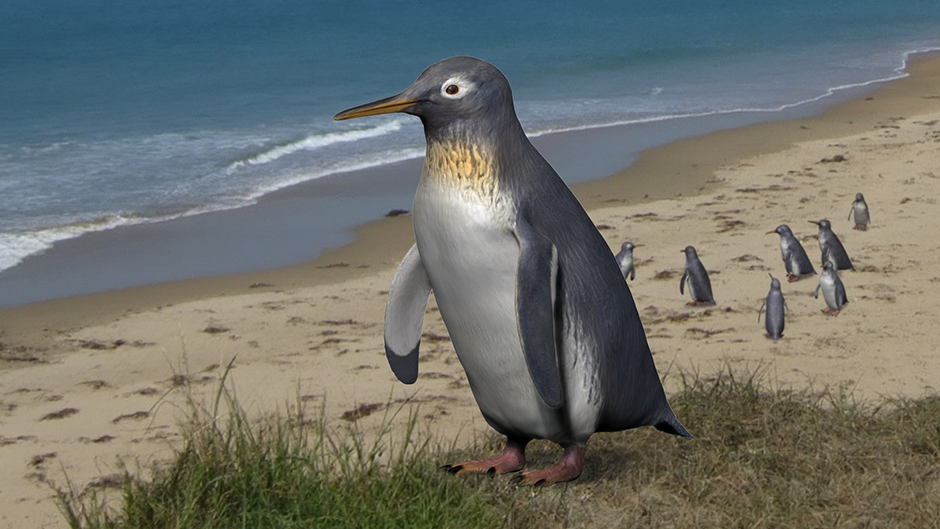Meet 'small diver': One of the tiniest penguins ever discovered
A tiny extinct penguin from New Zealand is key to understanding penguin wing evolution, researchers say.

A tiny penguin that waddled, swam and dove around the coasts of southern New Zealand 24 million years ago is "key" to deciphering how living penguins got their wings, a new study finds.
Researchers first unearthed fossils of the 1-foot-tall (0.3 meter) penguin back in the 1980s, but it has been an evolutionary enigma for decades, despite being one of the smallest penguins ever discovered.
A team has now re-analyzed the fossils and found they belong to a previously unknown species called Pakudyptes hakataramea. Pakudyptes combines the Māori word "paku," meaning "small" with the Greek word "dyptes," meaning "diver," according to the researcher's study published Wednesday (July 31) in the Journal of the Royal Society of New Zealand.
The newly described species plugs an important gap in penguin wing evolution because its shoulder joints are very similar to those of present-day penguins, while its elbow joints are very similar to extinct penguins.
"Pakudyptes is the first fossil penguin ever found with this combination, and it is the 'key' fossil to unlocking the evolution of penguin wings," study lead author Tatsuro Ando, a curator at Ashoro Museum of Paleontology in Japan, said in a statement.
Related: Largest penguin ever discovered weighed a whopping 340 pounds, fossils reveal
Sign up for the Live Science daily newsletter now
Get the world’s most fascinating discoveries delivered straight to your inbox.
With a standing height of around 11.8 to 13.8 inches (30 to 35 centimeters), P. hakataramea was about the same size as the smallest living penguins — little blue penguins (Eudyptula minor) — and the smallest extinct penguins — Wilson's little penguins (Eudyptula wilsonae).
The P. hakataramea fossils consist of three bones collected from the Hakataramea Quarry in South Canterbury in 1987. The team used computed tomography (CT) scanners to create a virtual, 3D image of the remains and then compared them to those of living penguins, which allowed the researchers to finally place this new species on the tree of life.
P. hakataramea had dense bones like living penguins, which would have been suitable for swimming and diving, according to the study. The hollow part of the bones — the medullary cavity — was also similar to little blue penguins, which typically spend time in shallow waters, so it may have done the same.
Most fossil penguins are large, at around 3.3 feet (1 m), so this tiny penguin also helps researchers learn more about how penguins diversified between when it was alive at the end of the Oligocene epoch (33.9 million to 23.03 million years ago) and the beginning of the Miocene epoch (23.03 million to 5.3 million years ago).
"Penguins evolved rapidly from the Late Oligocene to Early Miocene and Pakudyptes is an important fossil from this period," study co-author Carolina Loch, a senior lecturer in the department of oral sciences at the University of Otago, said in the statement. "Its small size and unique combination of bones may have contributed to the ecological diversity of modern penguins."

Patrick Pester is the trending news writer at Live Science. His work has appeared on other science websites, such as BBC Science Focus and Scientific American. Patrick retrained as a journalist after spending his early career working in zoos and wildlife conservation. He was awarded the Master's Excellence Scholarship to study at Cardiff University where he completed a master's degree in international journalism. He also has a second master's degree in biodiversity, evolution and conservation in action from Middlesex University London. When he isn't writing news, Patrick investigates the sale of human remains.









